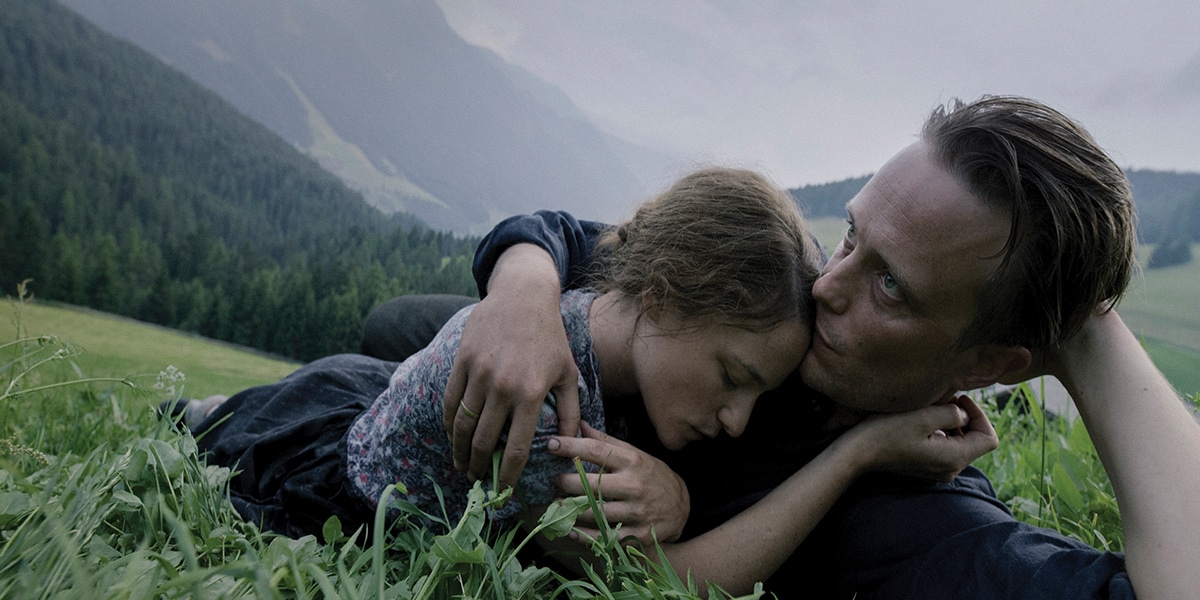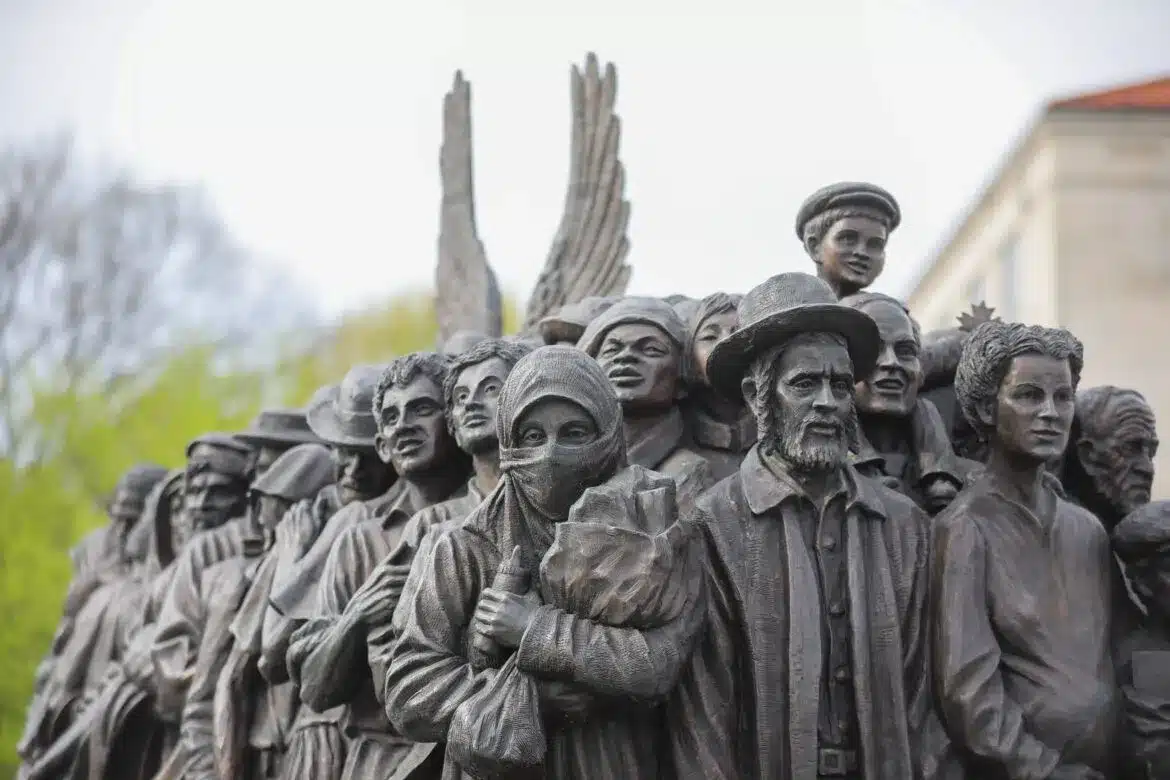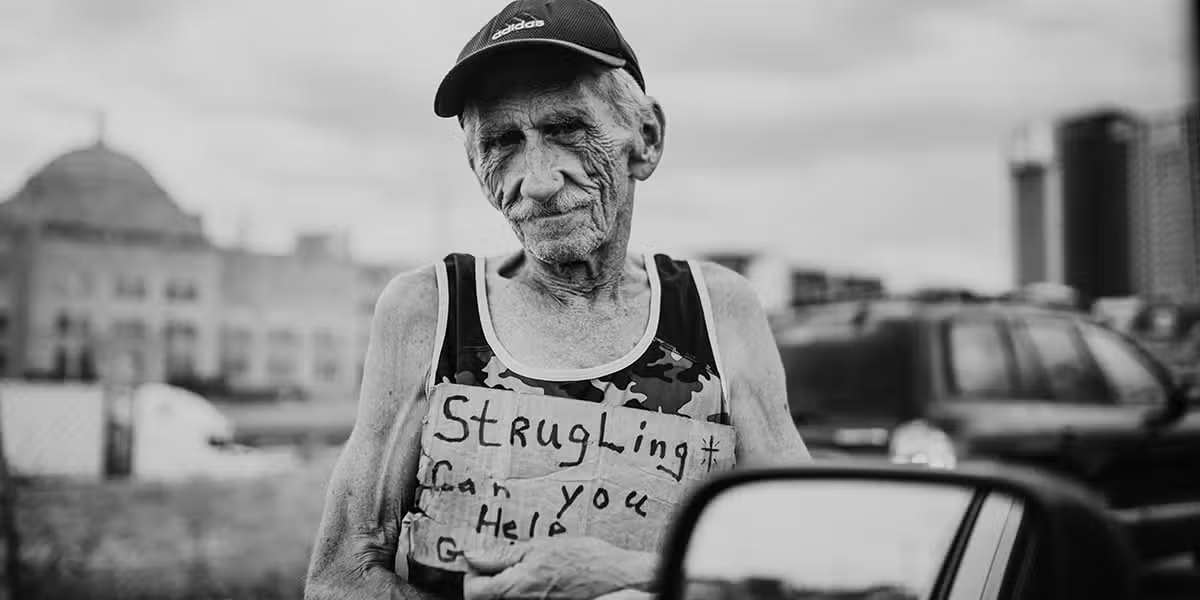At first glance they couldn’t be more different. But the subjects of these two new films are united by their heroic devotion to faith and justice.
Harriet Tubman and Franz Jägerstätter share seemingly insignificant, humble backgrounds. They were people who in the course of ordinary events would have lived and died without notice. But they responded to that divine spark of conscience that led them to resist powerful social and political oppression and the dearth of authentic Christian teaching of their times to make a difference.
American abolitionist Harriet Tubman (ca.1820-1913) and Austrian conscientious objector Franz Jägerstätter (1907-1943) were born in different centuries and lived on two different continents, yet their lives actually overlapped by six years. These two people were from countries with shameful pasts: Tubman lived in the Civil War-era United States during slavery; Jägerstätter lived in Austria when it was willingly annexed by Nazi Germany before World War II. Both were connected to the land, one by enforced labor and the other as a simple farmer. Both of these heroic people lived by their consciences, with courage and faith, for family and country. Both ask and were asked: Can one person make a difference by the choices she or he makes?
Moses in the 19th Century
Harriett Tubman was born Araminta Ross in Dorchester County, Maryland. Her father, Ben, was a skilled woodsman who managed timber work on a plantation; her mother, Rit, was a slave of the Brodess family. Her eight siblings and other slaves called Harriett “Minty.” One day, as a young teenager working in the fields, she was struck in the head by either a piece of iron or a rock thrown by an overseer aiming at someone else. She suffered a concussion that caused her to develop epilepsy. She bore scars from this attack and other beatings for the rest of her life.
It is said that Tubman learned resistance from her mother. After losing three daughters when the master sold them south, Rit hid her youngest son, Moses, for a month to prevent his being sold away from the family. When Brodess and a buyer from Georgia approached Rit looking for the boy, she swore she would split open the head of any man who took her child. Brodess backed off.
Tubman never learned to read or write, but her mother taught her stories from the Bible. She was a Christian but rejected interpretations of New Testament teaching that urged slaves to obey their masters. She was inspired by tales of deliverance from the Old Testament, especially that of Moses leading his people out of bondage in Egypt. Tubman led a strong prayer life and enjoyed a close relationship with God. Later, when she escaped bondage and returned to lead others to freedom, she would fall into a prayerful state in which she heard the word of God. In the film she says, “God spoke to me, but it was my feet that did the walking.” Did epilepsy have anything to do with her visions or mystical encounters with God? We will never know for sure. But it is a fact that Tubman was inspired and lived by the convictions of her faith in God.
In 1844, Harriet married John Tubman, a free black man. It was not unusual to have such mixed marriages at the time. When her owner died, it seemed Harriet would be sold to pay his debts. In late 1849, Harriet escaped using an orga-nized route that would become known as the Underground Railroad.
With Philadelphia as her base, she returned to Maryland’s eastern shore several times and brought at least 77 slaves to freedom. After leading the first seven slaves to freedom, Harriet was made a conductor on the Underground Railroad. She sang spirituals as a secret code to let slaves know she was in the area.
Tubman believed that God spoke to her, and she knew her calling was to make a difference. She bore the mantle of an Old Testament prophet. To the slaves she was a deliverer, and to slave owners and hunters she was a phantom. They called her Moses.
Harriet: The Movie
In Harriet, the cinematic team of writer-producer Gregory Allen Howard (Remember the Titans) and director Kasi Lemmons (Eve’s Bayou) takes us back almost 200 years to a plantation in Maryland. The film focuses on Tubman’s escape from slavery in 1849 and the journeys she made to bring others to freedom. Her journeys were incredibly physical and dangerous, taking her back and forth from Maryland to Philadelphia, New York, and Canada.
The movie enfleshes the basic framework of the events of Tubman’s life, dramatized in a way that makes her come alive as a small but mighty woman of love, passion, faith, and courage.
The cast, led by Cynthia Erivo as Harriet, includes Vondie Curtis-Hall as the Reverend Green, who preaches obedience to slaves, but this is a clever ruse. Janelle Monáe plays a free black woman, Marie, who gives Harriet a home and finds her paid employment for the first time; and Leslie Odom Jr. is William Still, who runs the Pennsylvania Anti-Slavery Society and the clandestine Underground Railroad.
According to writer-producer Howard, a Catholic, Tubman’s faith in God was intense. He says: “She was a radical because she rejected the oppressive preaching she heard growing up. She believed in God as a higher power. That she became known as Moses is no accident. She delivered her people to freedom.
“With Harriet I wanted to write a story about a woman of faith, a kind of superhero of her times who is still relevant today,” Howard continues. “To do this authentically, you have to treat her faith in an organic way. This isn’t a film with a message, because I don’t like movies that do that. This is a historic drama about a woman, a mythic character whose very being was imbued with faith.”
Two of the film’s other producers are Catholic as well: Debra Martin Chase (The Princess Diaries) and Daniela Taplin Lundberg (Beasts of No Nation). For Chase, this film became possible because Hollywood began to change with the #MeToo movement. Studios wanted to tell stories about women who made a difference.
Lundberg, who went to St. Martin of Tours School and Marymount High School in Los Angeles, says the six-week film shoot in Virginia was very challenging, “but miracles kept happening.” One of these miracles occurred when they were shooting the scene where Tubman crosses over the line to freedom.
“It was cloudy and rainy, and the crew had carried in all this equipment,” Lundberg recounts. “We had just about given up catching the sunrise for the clouds, but just in time, the clouds parted and we got the amazing shot you will see in the film. Everyone was very moved because God seemed to be watching over us.”
Erivo, who plays Harriet, told the online magazine Deadline of the emotions and faith she drew on for the role: “The loss that she [Tubman] felt, she could have used to completely back off and go the other direction, but she used it as a force. She used it to help more people. Because she was so deeply connected to God, it didn’t make sense that God would bring her to this place and then she leaves with nothing. She knew it had to be for a reason.”
Following His Conscience
Franz Jägerstätter, too, knew that doing the right thing was the only choice he could make. As a Catholic and member of the Secular Franciscan Order, he chose nonviolence. Like St. Thomas More centuries before him, Jägerstätter quietly chose to follow Jesus’ teachings and his own conscience even if no one else ever knew.
Jägerstätter was born in Sankt Radegund, Austria, to a single mother, Rosalia Huber, on May 20, 1907. He was initially raised by his maternal grandmother. His father was killed in the First World War. Meanwhile, Rosalia married a well-off farmer, Heinrich Jägerstätter, who adopted young Franz.
Jägerstätter’s early education at a one-room schoolhouse ended at about the age of 12. As a youth, he lived a bit on the wild side. In 1933, he fathered a daughter out of wedlock, whom he supported until his death. That same year he inherited his adoptive father’s farm and began to work the land in earnest.
In 1936, he met and married Franziska (“Fani”) Schwaninger. She was deeply religious and certainly had an influence on Jägerstätter. He began to study the Bible and read the lives of the saints, and he volunteered as a sexton at his parish church. Instead of a wedding banquet, the newly married couple went on pilgrimage to Rome, solidifying their faith as the mainstay of their marriage and family. By 1943, the couple had three daughters, all under the age of 6.
In 1938, the Austrian people voted to allow Germany to annex their country, and Franz was the only one in his village to vote against it. Fearing reprisals, the village authorities changed his vote so that there would be no opposition from the village. When he was called to military duty in early 1943, Jägerstätter had already asked his parish priest and bishop for counsel. The priest encouraged him to serve his country; the bishop told him that “the Church tells us we have a duty to the fatherland.” Indeed, not one bishop of Germany or Austria ever renounced Hitler’s wars or proclaimed them unjust.
He and Fani prayed about his decision not to take the oath of allegiance to Hitler, knowing that this would most certainly mean his death. Jägerstätter could not see any other way to live his faith and commitment to nonviolence. He reported for training in March but refused to take the oath to Hitler. He was arrested, sent to Berlin, and imprisoned in solitary confinement. While in prison he was known to share his food and was often seen praying the rosary. Not long after his imprisonment, on August 9, 1943, Franz Jägerstätter was beheaded.
In June 2007, Pope Benedict XVI proclaimed him a martyr, and that October he was beatified at the New Cathedral in Linz in the presence of his wife, daughters, and descendants.
A Hidden Life Revealed
Filmmaker Terrence Malick’s A Hidden Life premiered at the Cannes International Film Festival in May to a seven-minute standing ovation. With this film, Malick not only takes a deep dive into the short life of this Austrian martyr, but also asks us to accompany the young man on his inner journey as he contemplates and discerns his fateful decision to resist Hitler in 1943.
A Hidden Life does not tell the story of a saint, but that of a faithful man of principle and courage, an authentic Christian. Malick, the grandson of Christian emigrants from Syria, attended an Episcopal boarding school in Austin, Texas, and now makes films that are marked by a deeply Christian vision and that ask probing and personal questions about the meaning of life.
Film reviewers have often criticized Malick’s contemplative style and the length of his films. Others take issue with his freewheeling editorial style that can seem unfocused. But with A Hidden Life, Malick not only has kept his poetic, pastoral style, but also offers a rather straightforward biopic about a man whose legacy and relevance endure more than 75 years after his death. The filmmaker highlights the couple’s marriage, family, spirituality, and desire to do God’s will despite the growing dread of what is to come.
The film also contains shots of the interior of the Jägerstätter farmhouse, with the same clock on the wall that marks the time of Franz’s martyrdom. The bedroom looks as it did during Franz’s lifetime, with Fani’s embroidery still hanging on the walls.
The lighting proved a challenge to the filmmakers, but Malick wanted the natural light to blend organically with Jägerstätter’s inner journey.
In a heartbreaking scene in the film, Franz Jägerstätter (August Diehl) is visited by his wife (Valerie Pachner) and the parish priest. Franz insists, “I can’t do what I believe is wrong; I have to stand up to evil.” When his lawyer and military officers encourage him to recant and take the oath of allegiance so he can be free from prison, he answers, “But I am already free.”
The title of the film comes from a quote from George Eliot (author Mary Ann Evans’ pen name) in her novel Middlemarch: “For the growing good of the world is partly dependent on unhistoric acts; and that things are not so ill with you and me as they might have been is half owing to the number who lived faithfully a hidden life, and rest in unvisited tombs.”
Messages for Today
Although they are historical dramas, both Harriet and A Hidden Life are films for our times, when political division and lack of moral clarity cloud pastoral life and public discourse. Tubman and Jägerstätter lived the courage of their convictions and show us how we, too, even if we believe ourselves to be insignificant, can be the change we want to see in the world. Harriet demonstrates how, throughout her life, Tubman was a witness to the great evil of slavery and a model to every person to work to change the world for the better.
Films such as A Hidden Life help Catholics and people of goodwill have a clearer understanding about the morality of war, weapons, violence, and the inviolability of conscience.
Their inspiring stories, viewed through the power and grace of cinema, show us how to make a difference, make sacrifices, and do the right thing, even when we think no one is looking.
Sidebar: Sister Rose Goes to Cannes
Last May, I had the honor to serve on the Ecumenical Jury at the Cannes International Film Festival. We were three Catholics and three Protestants from France, Germany, Greece, Italy, and the United States, who watched 22 films and took part in three ecumenical events sponsored by the Catholic and Protestant communities in Cannes. Ecumenism and dialogue have been part of the festival since 1974.
This is the sixth time I have had the privilege of serving on ecumenical or Catholic juries. I dress in regular clothes for the festival so as not to attract attention to myself, but rather to let the films speak for themselves. Festivals are a way to let filmmakers’ efforts shine even if they do not receive awards. Indeed, while most did not meet our criteria, we had several that did.
Our criteria…
- high artistic quality,
- religious perspective,
- how the film deals with our responsibility as Christians in the modern world,
- the film’s universal appeal and influence,
- and how well the film lends itself to dialogue on the local level, through film clubs and retreats, for example.








